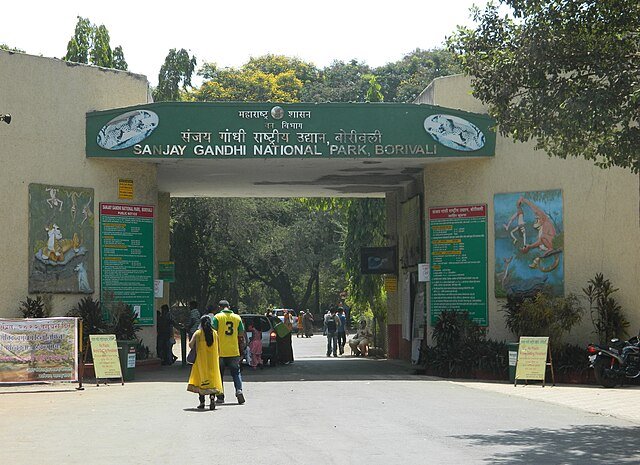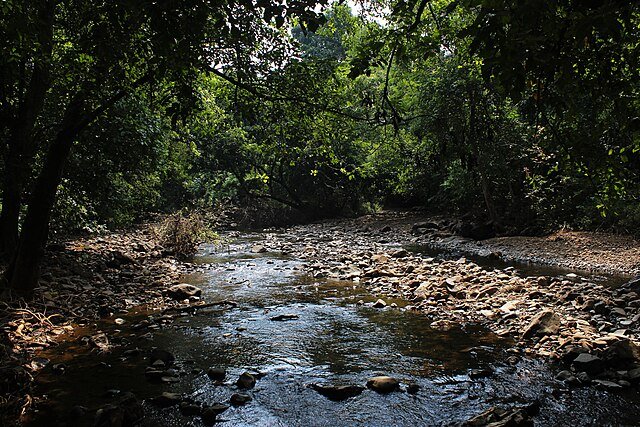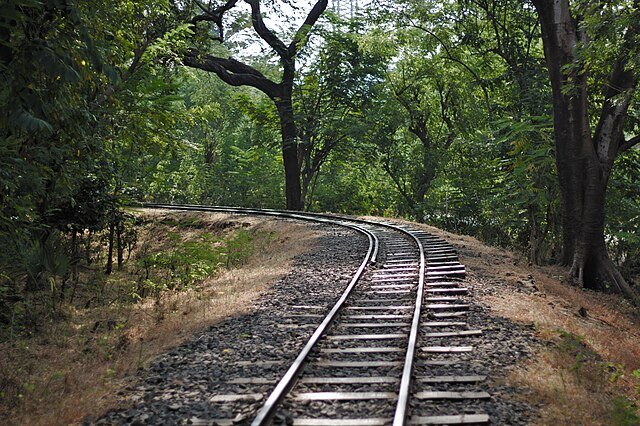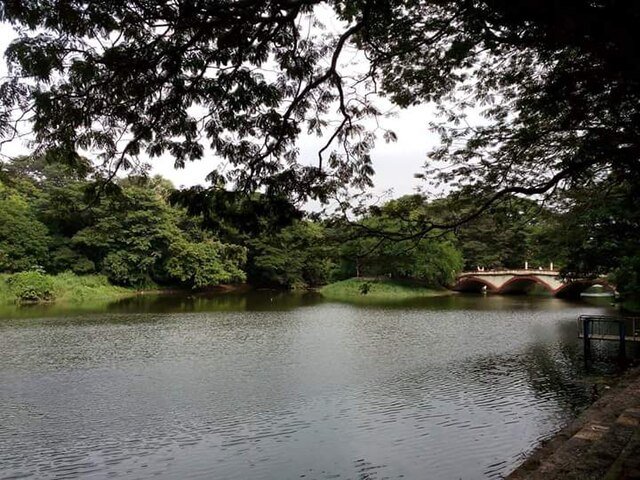Overview
Sanjay Gandhi National Park (SGNP) is a magnificent natural oasis nestled within the bustling metropolis of Mumbai, making it one of the world’s most unique national parks. Spanning over 104 sq. km, this vast protected area is a vital lung space for the city, offering a stunning contrast to the urban chaos. The park is a biodiversity hotspot, home to a rich variety of flora and fauna, including leopards, spotted deer, macaques, and over 250 species of birds. Visit during North Mumbai One day trip by cab
You can read : Places to Visit in Mumbai
Beyond its wildlife, Sanjay Gandhi National Park boasts ancient history with the famous Kanheri Caves—a complex of 1st-century BCE Buddhist rock-cut monuments. It provides a crucial refuge for both wildlife and Mumbaikars seeking adventure, tranquility, and a connection with nature.
How to Reach Sanjay Gandhi National Park

- By Local Train: The nearest railway stations are Borivali (Western Line) and Kandivali. The main entrance is a short auto-rickshaw ride from Borivali station (East).
- By Metro: The Mumbai Metro has a dedicated station at Borivali National Park, which is right next to the main entrance, making it the most convenient mode of transport.
- By Road: The park is easily accessible by road. BEST buses, auto-rickshaws, and app-based cabs regularly ply to the park’s gates from all parts of Mumbai and Thane.
- By Air: Chhatrapati Shivaji Maharaj International Airport is approximately a 45-minute to 1-hour drive away.
Best Time to Visit Sanjay Gandhi National Park

The best time to explore Sanjay Gandhi National Park is during the winter and post-monsoon months, from October to March. The weather is pleasant and cool, ideal for trekking, safari, and exploring the caves. The park is at its most lush and beautiful right after the monsoon (September-October), when the waterfalls are flowing and the foliage is vibrant green. Summers (April-June) can be hot and humid, though the forest cover provides some respite. The park remains open throughout the year, but some areas may be restricted during peak monsoon for safety.
Importance of Sanjay Gandhi National Park

Sanjay Gandhi National Park is critically important as one of the few national parks in the world located within a major city’s limits. It acts as a vital green lung, improving air quality and providing an essential ecosystem for countless species. It serves as a crucial watershed for the city’s lakes (Tulsi and Vihar) and is an invaluable educational and recreational resource for millions of citizens, promoting environmental awareness and conservation.
Things to Do at Sanjay Gandhi National Park
- Go on a Safari: Take a lion or deer safari through the park’s designated zones.
- Explore Kanheri Caves: Trek or drive up to these ancient Buddhist caves to admire the intricate carvings and stunning views.
- Trekking: The park has numerous trails, like the route to the highest point, Highest Point (Malad Trail), for breathtaking views.
- Visit Nature Interpretation Centre: A great place to learn about the park’s biodiversity.
- Enjoy a Picnic: The designated picnic areas are perfect for a family day out.
- Bird Watching: A paradise for bird enthusiasts, especially around the lakes.

Nearest Tourist Places
| Distance | Attraction | Highlights |
|---|---|---|
| 6 km | EsselWorld & Water Kingdom | Popular amusement and water parks. |
| 8 km | Gorai Beach | A serene beach accessible via a ferry from Gorai Creek. |
| 15 km | Juhu Beach | Mumbai’s most famous and vibrant beach. |
| 20 km | Powai Lake | A scenic artificial lake surrounded by urban development. |
Significance
The significance of Sanjay Gandhi National Park extends far beyond recreation. It is a living testament to the coexistence of urban development and wilderness. It plays a key role in biodiversity conservation, particularly for its leopard population. Historically, the Kanheri Caves within its boundaries mark it as a site of immense archaeological and cultural importance, showcasing centuries of Buddhist influence and artistry.
FAQs
Q1: What are the entry timings and fees for Sanjay Gandhi National Park?
A: The park is generally open from 7:30 AM to 6:00 PM. Entry fees are nominal and separate for adults, children, vehicles, and activities like safari and caves. (Check the official website for current rates).
Q2: Is it safe to visit with the leopard population?
A: Yes, it is generally safe for visitors who stick to designated paths and areas. Leopards are elusive and avoid human contact. It is advised not to venture into dense areas alone, especially during early morning or late evening.
Q3: Can we bring our own food?
A: Outside food is not allowed inside the core park area to avoid littering and disturbing wildlife. There are canteens and designated picnic spots where food is available or can be consumed.
Q4: Are there guides available?
A: Yes, trained guides are available at the entrance for treks and for providing information about the Kanheri Caves and the park’s history.
Q5: Is photography allowed?
A: Yes, photography is allowed, but there might be additional charges for professional cameras. Drone photography is strictly prohibited.
